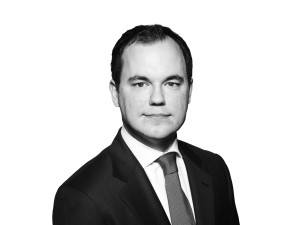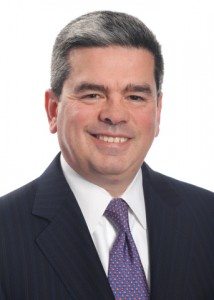Q: Consolidation. In your view, is M&A activity done in the reinsurance sector or is there more to come? What has been the impact of consolidation of insurers, reinsurers and brokers on the reinsurance sector? How is consolidation affecting your business? Do you expect to participate?
 Mike Krefta, Chief Underwriting Officer, Hiscox Re
Mike Krefta, Chief Underwriting Officer, Hiscox Re
As we’ve seen in the past weeks, M&A continues, mainly driven by excess capital, a desire to access the Lloyd’s franchise and the need for diversification among some players.
The impact is being felt in many ways, not the least of which is a loss of reinsurance business as carriers consolidate and buy less reinsurance. Effectively it exacerbates the soft market cycle as there is less demand for an oversupplied product. I’m also concerned that it could lead to a dilution of talent in the long term with the existence of fewer specialty carriers and less emphasis on a diversification of views and thought leadership.
From our perspective, we already have a well-diversified business both by product and by geography. Add to that a very strong brand and talented employees, and I think we’re well set to compete without the need to engage in M&A activity.

Tad Montross, Chair and CEO, General Re Corp.
Zurich’s pullback from the RSA transaction may well be the tipping point on the recent frenetic M&A activity. Valuations have become detached from the reality of this market. Several months ago, the common rationale was that 1+1=2. Today, to justify these valuations, it is often stated that 1+1 will equal more than two. Historically less than 50 percent of mergers or acquisitions created shareholder value.
 Bill Donnell, President of U.S. Property/Casualty, Swiss Re
Bill Donnell, President of U.S. Property/Casualty, Swiss Re
One driver for the recent pickup in M&A activity is the increasing realization that balance sheet size is crucial. The growing scale of peak risks means some classes of business can often only be underwritten by reinsurers with large capital buffers.
In the U.S., the consolidation we are seeing is mainly among companies with undiversified U.S. cat portfolios. They may have little differentiation toward client’s value propositions and are increasingly at risk of being disintermediated by alternative capital and therefore losing market share. Those players will lose market share, return capital to investors, and some will become the target of mergers or acquisitions as part of market consolidation. Marginalized carriers will see their share of the pie decrease. We expect to see these trends continue.
The M&A activity has broadened. Starting out in the reinsurance sector, it has now spread to commercial insurance. The other aspect of change is the increased interest of foreign buyers—many from Asia—in U.S., Bermuda and London market companies.
(Editor’s Note: Donnell is set to leave Swiss Re on Dec. 7 to become president and CEO of the National Council on Compensation Insurance.)

Steve Levy, President, Reinsurance Division, Munich Reinsurance America Inc.
Consolidation is ongoing within the insurance as well as the reinsurance sector, and we expect it will continue for several years. We think the important question is how the profile of the classic reinsurance clients on the primary insurance side will change. Business models are changing there. Companies are bringing together both primary insurance and reinsurance. And the primary insurers are getting bigger and have different demand patterns once they have digested the effects of the consolidation. That means that they generally buy reinsurance more centrally. There has been a growing tendency for individual subsidiaries of large groups to stop placing reinsurance themselves. As a result of this trend, these large insurance groups have reduced the amount of premium they are ceding to the market.
Within the reinsurance sector, consolidation is going on mainly among smaller companies, so there will be stronger market players in the future. This will not influence the competition in the short term, but in the medium term it may result in greater price stability and hence be good for the market.

Gregory S. Hendrick, Executive Vice President and Chief Executive, Reinsurance Operations, XL Catlin
From a macro level, we see M&A activity continuing in the near term. Looking at the major forces in today’s economy we see globalization, better data and analytics, and increasing regulation all signaling increased scale being critical to future success.
When XL Group and Catlin Group officially united on May 1, we became the world’s eighth-largest property/casualty reinsurer (based on net written premiums). The combination enhanced our global presence and gave us a complete set of products. From a geographic perspective, we now have local presence in most major markets while still maintaining a strong wholesale presence for large or difficult placements. As an example, in Latin America, we have offices in Bogota and Sao Paolo for local presence and in Miami, which is fast becoming a wholesale market for Latin America. On the product side, there were lines of reinsurance that XL Group didn’t write and some other products not offered by Catlin. For example, XL hasn’t written credit and surety reinsurance since 2008; however, Catlin brings a strong credit and surety business. Conversely, Catlin did not have a U.S. crop insurance portfolio, but XL brings that capability through our wholly owned managing general agency, Global Ag Insurance Services. And there are more products and innovations to come.
Now, we can entertain any P/C risk that a client faces anywhere in the world. Combining this capability with our client-focused approach, we will look to enhance our broker and client relationship across products and geographies.




















 CEO Viewpoint: Predict and Prevent Just Makes Economic Sense
CEO Viewpoint: Predict and Prevent Just Makes Economic Sense  AM Best Downgrades State Farm General Ratings
AM Best Downgrades State Farm General Ratings  USAA to Lay Off 220 Employees
USAA to Lay Off 220 Employees  The Insurance Data Paradox: Structure Creates Flexibility
The Insurance Data Paradox: Structure Creates Flexibility 








